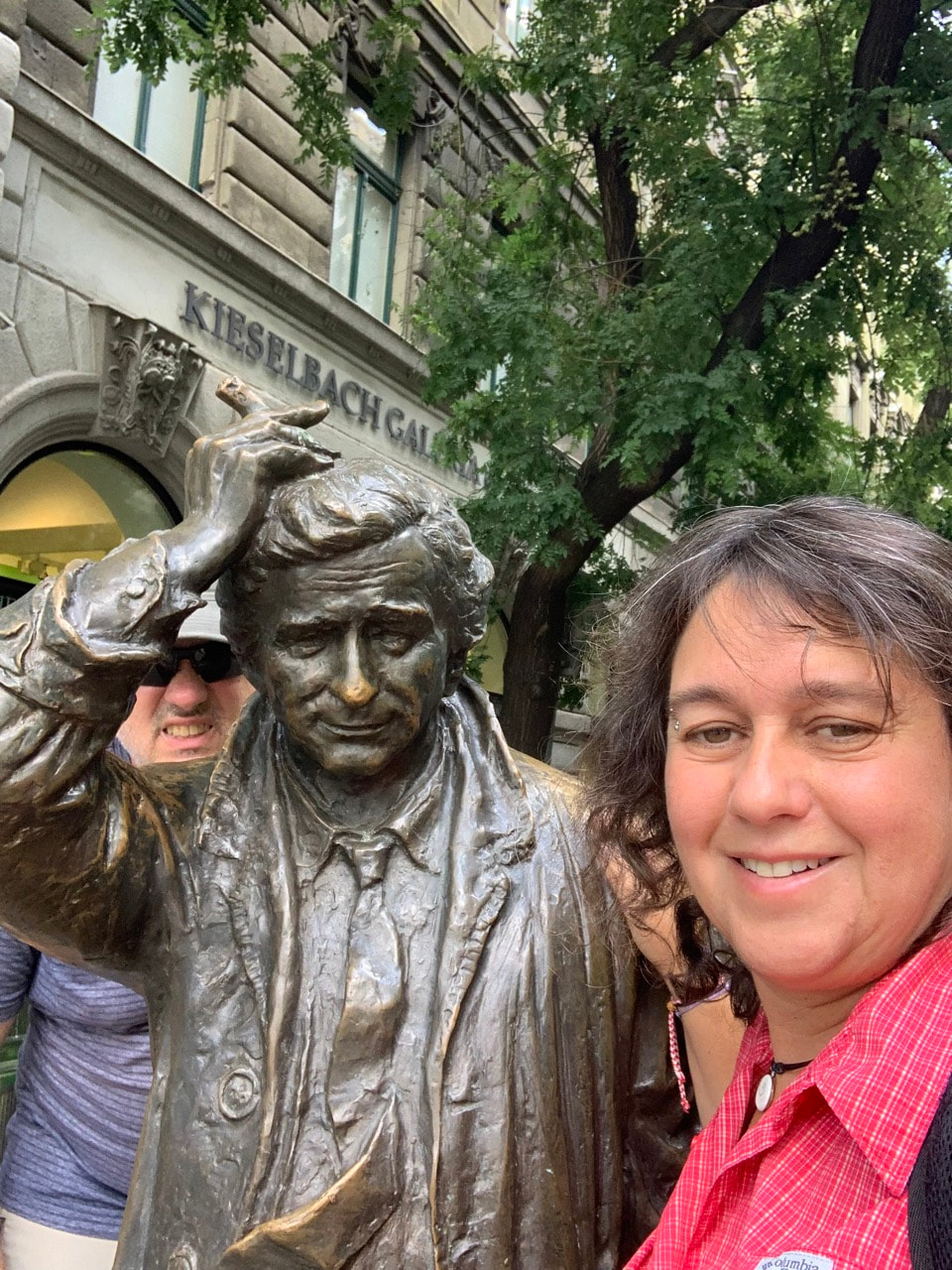House of Terror is a museum containing exhibits related to the fascist and communist regimes in 20th-century Hungary and is also a memorial to the victims of these regimes, including those detained, interrogated, tortured or killed in the building.
Beyond the lobby, photographs were not allowed. The museum's website provides views of the contents, which we thoroughly reviewed - https://www.terrorhaza.hu/en Visits to museums such as this is where we learned a bit of history not covered in any detail back where we're from.
A segment of the Berlin Wall - a memorial to the beginning of the fall of communism in easter/central Europe.
Off to more cheery environs..."Margaret Island is a 2.5 km (1.6 mi) long island, 500 m (550 yd) wide, 0.965 km2 (238 acres) in area in the middle of the Danube in central Budapest. The island is mostly covered by landscape parks, and is a popular recreational area. Its medieval ruins are reminders of its importance in the Middle Ages as a religious center. The island spans the area between the Margaret Bridge (south) and the Árpád Bridge (north). Before the 14th century the island was called Insula leporum (Island of Rabbits).
Its appearance today was developed through the connection of three separate islands, the Festő (Painter), the Fürdő (Bath) and the Nyulak (Rabbits), during the end of the 19th century, to control the flow of the Danube. Originally, the island was 102.5 metres above sea level, but now has been built up to 104.85 metres above sea level to control flooding.
Going back to Pest, on the Margaret Bridge, we see the Danube is quite pleasant today.
More curious statues are found - Columbo - just across the bridge.
Columbo is about to embark on his next case: behind him, to the left, there is a dead squirrel, outlined in chalk, gun still clutched in his hand. What happened? Is it a suicide, or a homicide in disguise? Don’t worry, Columbo will solve it for sure. (see in above left photo - the squirrel lies just off Gerri's left hip)
"Budapest Pinball Museum deploys more than 160 machines, almost all in fine working condition (pinball, arcade video cabinets and other games), making the venue one of the biggest ongoing pinball collections in Europe. All of the games are set to free play. Some of the exhibition’s older pieces qualify as truly unique antiques, like the first pinball machines ever made with flippers, dating back to 1947. Some of pinball’s predecessors are also on display, such as the unique bagatelles from the 1880s. The place was featured in The New York Times, Sydney Morning Herald, Frankfurter Allgemeine Zeitung, BBC, CNN, and some 100 other leading international media outlets."


















 RSS Feed
RSS Feed
